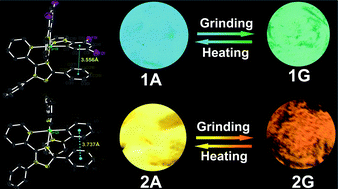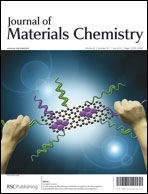To make Ir(III)-based complexes potentially multifunctional materials, two new cationic Ir(III) complexes with a 2-(5-phenyl-2-phenyl-2H-1,2,4-triazol-3-yl)pyridine (Phtz) ancillary ligand were designed and synthesized. By introducing the pendant phenyl ring into the ancillary ligand, the two complexes possess desired intramolecular π–π stacking between the pendant phenyl ring of the Phtz ligand and one of the phenyl rings of the cyclometalated ligand, which renders the complexes more stable. Density functional theory calculation indicates that the intramolecular π–π interactions in both complexes can reduce the degradation reaction in metal-centered (3MC) states to some extent, which further implies their stability. With these results in combination with their reversible oxidation and reduction processes as well as excellent photophysical properties, the stable light-emitting cells (LECs) would be expected. Furthermore, the two synthesized complexes exhibit reversible piezochromism. Their emission color can be smartly switched by grinding and heating, which is visible to the naked eye. In light of our experimental results, the present piezochromic behavior is due to interconversion between crystalline and amorphous states.

You have access to this article
 Please wait while we load your content...
Something went wrong. Try again?
Please wait while we load your content...
Something went wrong. Try again?


 Please wait while we load your content...
Please wait while we load your content...